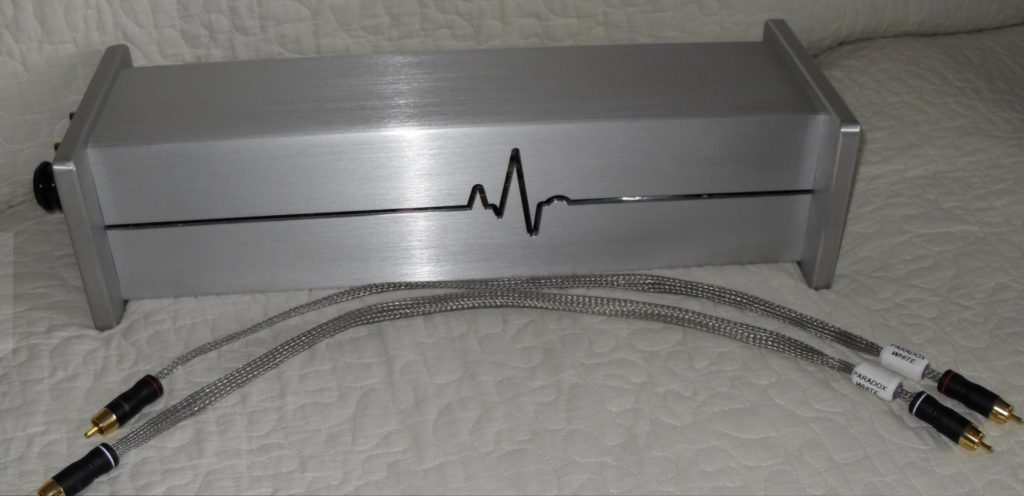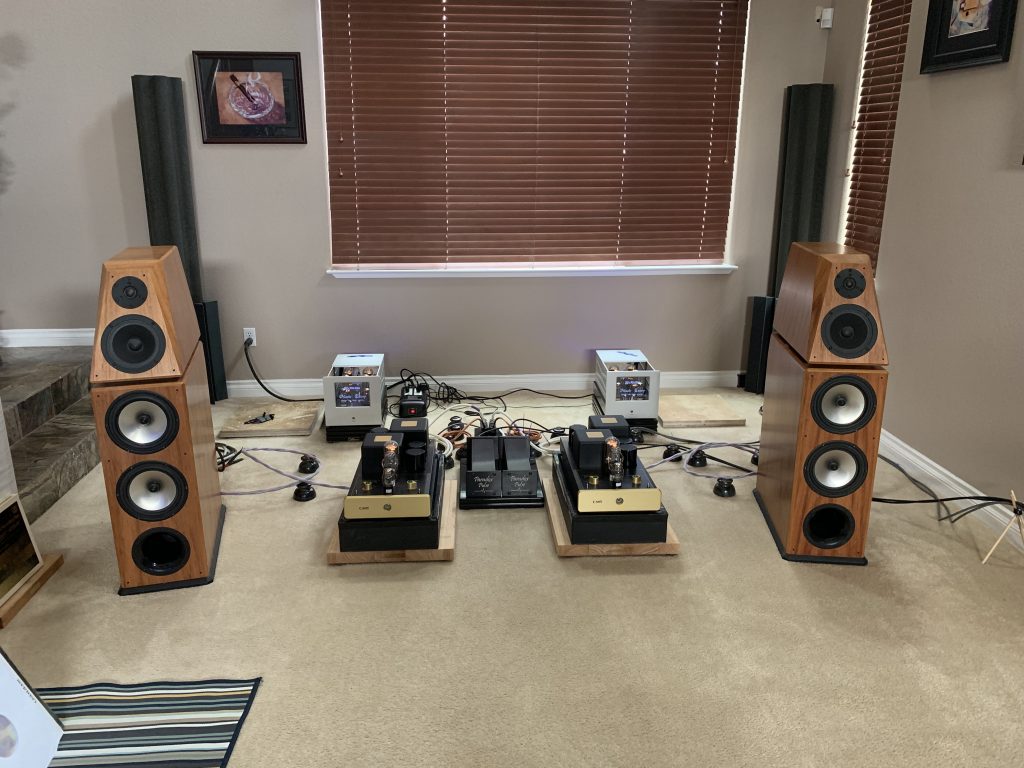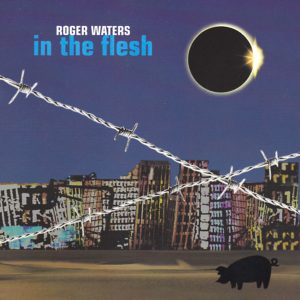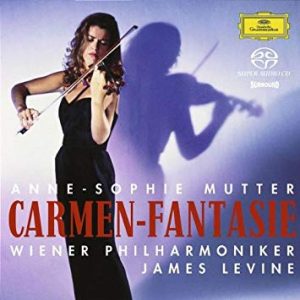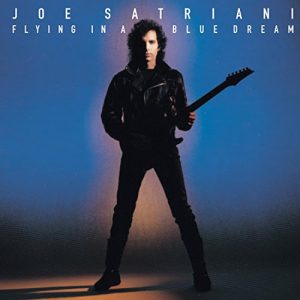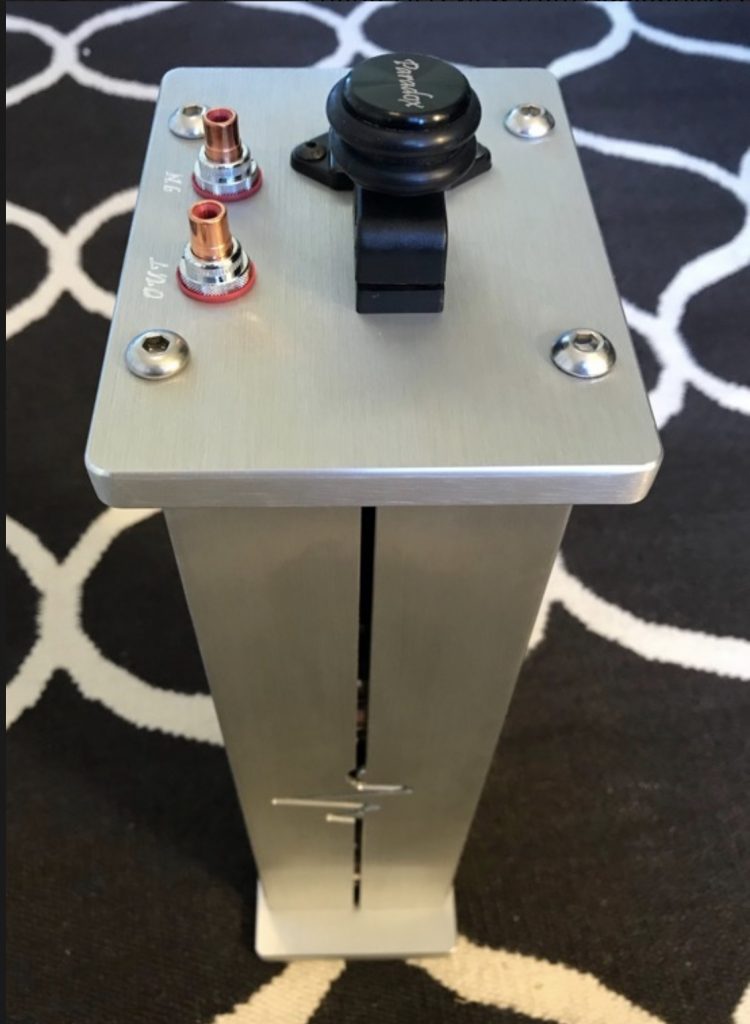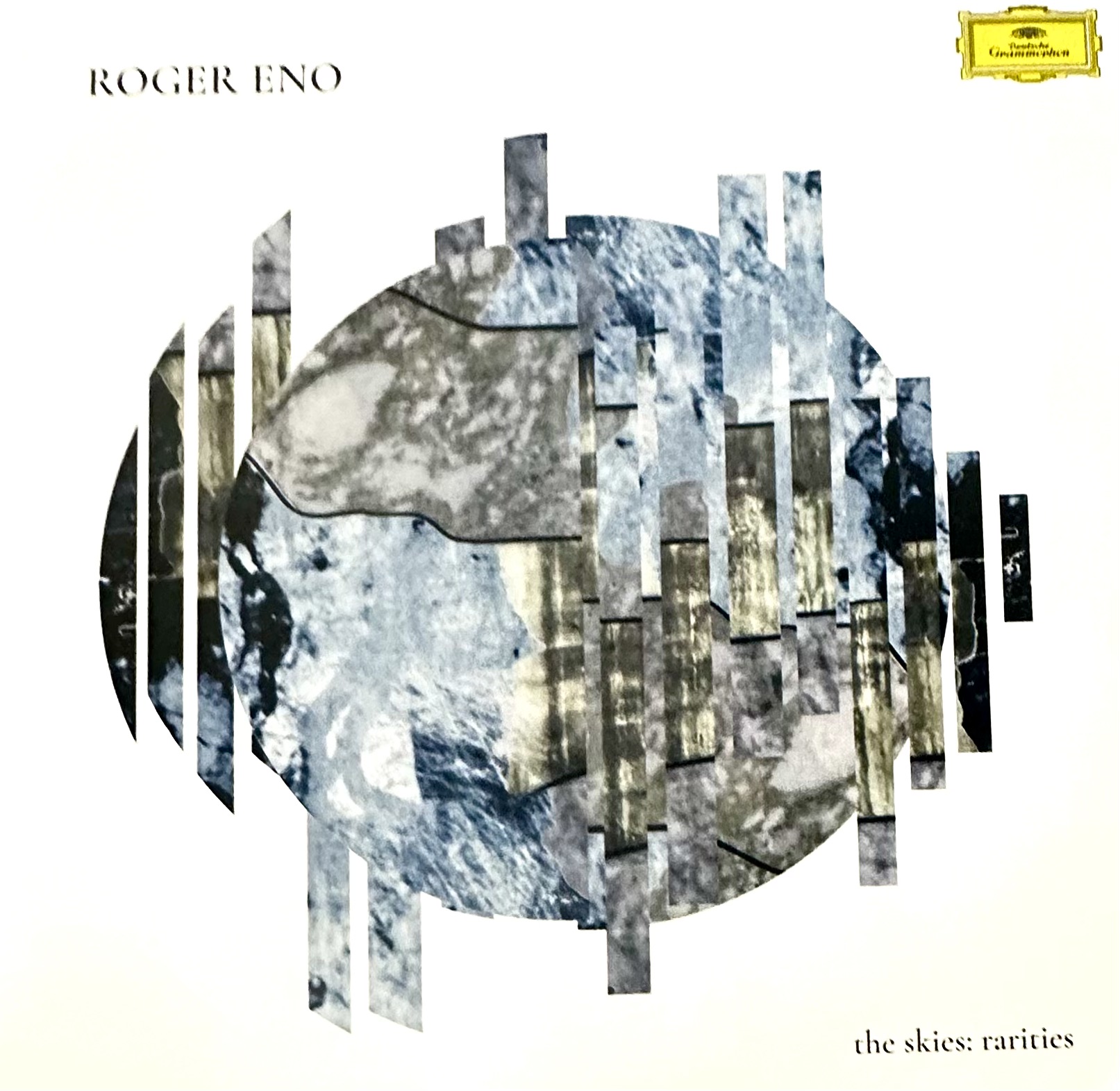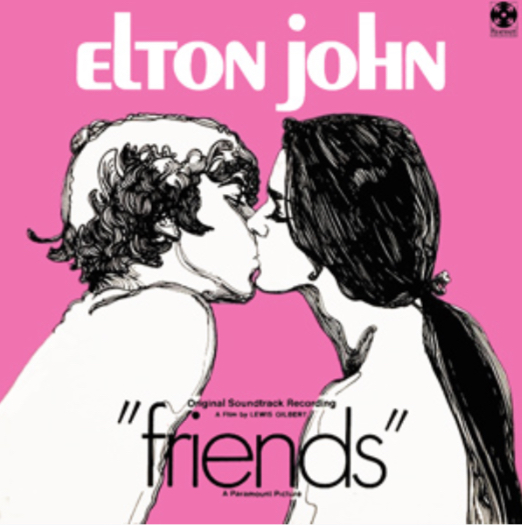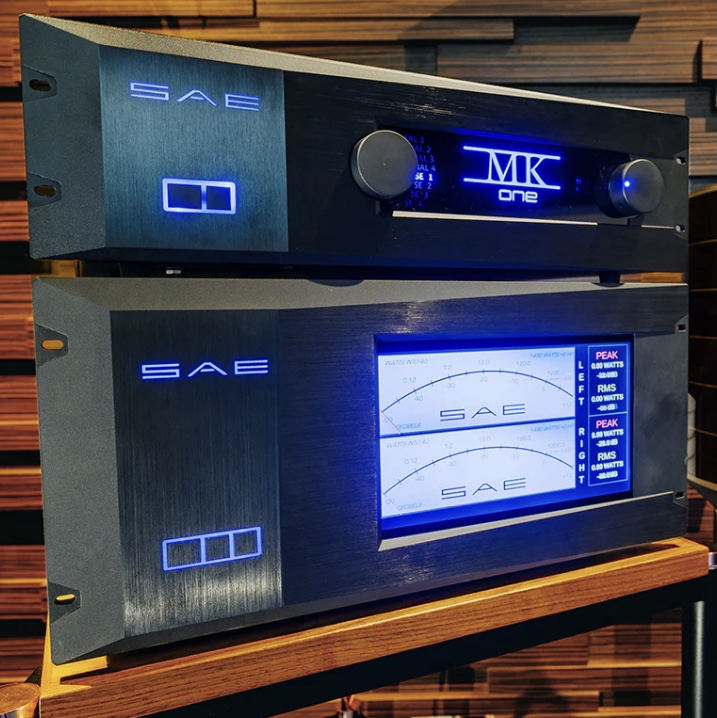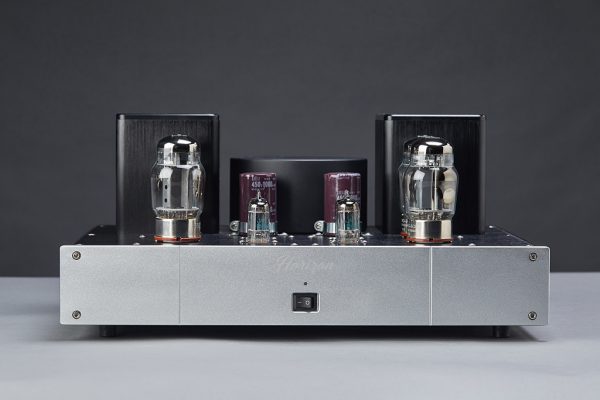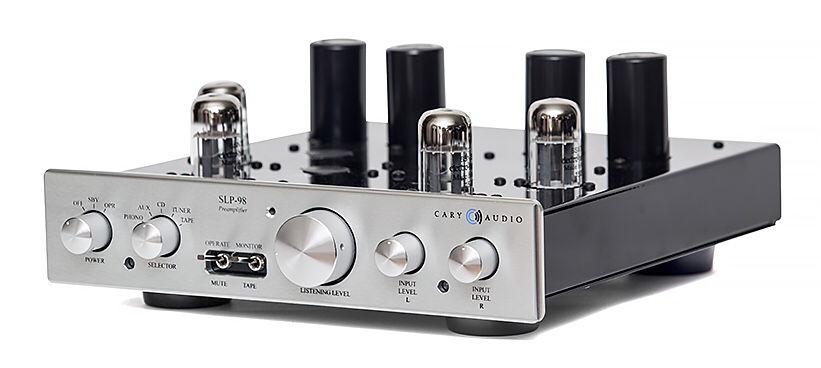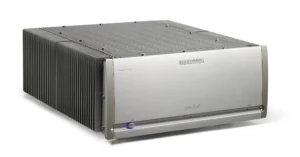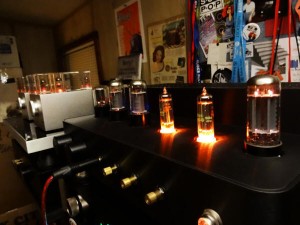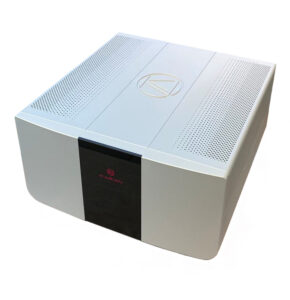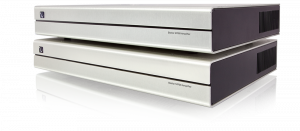"If you want the finest amplifiers money can buy here is your chance. The Paradox Pulse mono amplifier uses only the finest of parts throughout including MUNDORF MLytic power supply capacitors, 12 gauge copper foil chokes (DC PI filtering), paralleled transformers, quad stacked Schottky diode bridge, finest transistors available 4302 and 4281, A/C PI filtering, buffered output to run sub woofer amps, completely hand built, Cardas binding posts, Vampire gold over copper RCAs, Paradox wire.
"ALL Paradox Pulse electronics come with a money back Guaranty less shipping costs both ways."
My words? Nope. Those are the words of the venerable Terence Robinson. Terence is the mastermind behind the Paradox Pulse products. So far I have no reason to doubt Terence's claims, but that is a tall order to fill. We will see just how well these amps fare after a few months of living with them and comparing them to other amps in my arsenal. That is a very serious opening volley from Terence, but he rarely overstates his skills and designs.
This is my third and final installment on Paradox Pulse gear for this year. I was given the extreme pleasure of having a number of items that Terence and his brother build in my room since last year.
So what do we get for our $8000 a pair? Well one thing is for certain, they are one of the most interesting looking amps I have seen and they are extremely "placement friendly." You can stand them on end so they resemble small monitor stands, or lay them down side by side where they will fit neatly into a standard audio rack. On the back / or top, depending on orientation, are the power cord receptacle input along with an RCA input, an RCA output to feed to a sub via RCA connection, and the speaker binders, which are one of the coolest and easiest to operate that I have seen. They provide a single tightening knob and are very slick indeed. The amps come in your choice of color as long as it is black or clear coated natural aluminum.
Terence delivered them to my home, and we set them up. They were run in so no time was wasted on me needing to do that, which was very much appreciated. Straight to critical listening. What a joy. I could not get over the unusual look of the amps as we initially had them standing on their ends.
They were left in that position for approximately a month. As things came and went around the amps I finally changed the room, added some stands, and they found their way to a shelf and stayed there the remainder of the review time. Placement into a rack shelf was of no consequence. They only need a medium amount of space to properly breathe.
Terence keeps certain aspects and details of the amps close to the vest, but for my readers who need the hard numbers here you go.
- Solid-State, mono.
- A/B power operation, uniquely designed and hand assembled using the finest parts available.
- Hard wired for sonic purity and reliability.
- Input impedance 100k ohm, overall gain 27dB.
- Power consumption 5 watts, they are meant to be left on always.
- Buffered output for subwoofer or daisy chaining.
- Output Devices 4281 and 4302. "O" wire 8 gauge copper.
- Max power 100 watt per channel.
- 17"L x 6"W x 4.5"H center section 4"x 4", ~16 pounds each.
From Terence directly regarding his design philosophy:
"Meaningful information about the Pulse amplifier is as follows.
"No switches or relays of any type as they all impede performance (this means any device with them will not sound as good as it could have otherwise) and are only for convenience functions.
"Chassis is used as the heat sink so overheating the amplifier is impossible under normal operating conditions if used indoors in a comfortable room. (This is absolutely correct. They have been lugged in and turned on no stop since they arrived. They run extremely cool!)
"We have never tried to put them in the sun outside (I live in the desert where temperatures in the 100+ degrees are common in summer) and blast music to their clipping point, so I do not know what would happen under those conditions, although I believe they would be just fine.
"Parallel transformers to lower overall impedance. This lowering of impedance is very important to bass and the dynamics within the bass line.
"Quad Schottky diode rectifiers per mono, which means there is a total of 16 diodes to make the bridge rectifier dropping the impedance significantly. Again dropping impedance to the A/C is another reason why there no amplifiers better at bass, speed and detail than a Pulse.
"Plug the Pulse mono straight into wall outlet as they have their own filtering and surge suppression. Using two gas discharge tubes for surge protection and 12 gauge copper foil inductors along with MKP capacitors to remove hash noise via the AC PI filtering.
"I use Mundorf M-Lytic capacitors (4 total) and Mundorf 12 gauge copper foil inductors make up the DC PI \filtering for removing further noise from the DC power supply along with very special bypass capacitors.
"Output Devices are 4281 and 4302, "O" wire 8 gauge copper.
"When I say very special I mean secrets that no others have. I hate secrets, but I do not want other companies to ever be able to catch up!"
Not being an engineer that kind of talk always leaves me asking one thing, "What does all this actually mean?"
Well the sound absolutely stunned me. If I had my eyes closed I would have sworn that I was listening to a set of tube amps with a otherworldly ability to bring insane speed and detail to the bottom end. I purchased my dream amplifiers a while back. They are set of Cary 805Cs. They were lightly used, and the person who I purchased them from was more OCD about his gear than I am, and that is saying a whole lot. I have never seen anyone go to the lengths he did to make sure they arrived in perfect shape, including building special wooden crates with handles and all the original boxing inside. I sent them to have an upgrade done to them, so they were gone when the Paradox amps arrived. An amp like the 805C is one that stays in your memory long after you have listened to it. My greatest listening experience was 20 years ago in Phoenix at the old Arizona Tube Audio where these amps and matching Cary preamp were driving a set of ProAc Response 2.5 speakers, and the source was a VPI turntable with a Koetsu cartridge playing Sara K's "If I could Sing Your Blues." It was an experience in listening that I have never forgotten, and I swore one day I would have these amps.
Now I do and I doubt they will ever leave my possession. That being said, once the Carys were back in the system I was able to A/B them, and was stunned at how closely the Paradox Pulse amps mimicked the sweet tube sound of the Cary. Not the same, but remarkably close for solid-state amps. Where they completely shamed the Cary was in the bass. We will get to that in a bit. There are those who might say, "You are comparing a 50-watt tube amp to a 100-watt solid-state amp. That is hardly a direct or good comparison!" To that I would say, you are correct. However some times it is a good thing to compare an apple to a kumquat, especially if you are thinking about eating both fruits. So that was my reason for using the Cary in this comparison.
I pushed just about every kind of music through these amps that I could find. From Django Reinhardt to Jon Jorgensen, from Frank Sinatra vs Ravi Shankar to Riki Lee Jones and beyond. Nothing that I threw at them seemed to phase the amplifier's ability to produce the music, all of the music at all levels. As low a level as, "honey I just put the baby down for a nap" low to Concert Hall and arena rock levels. The amps never wavered in their ability to provide detailed, cohesive reproduction, and never ran out of headroom.
As I stated earlier, they were put into position to replace the Cary 805c for the duration. Overall, the amps were exemplary in their presentation of every bit of music I ran through them.
I should note that I have actually created a more near-field position in my listening room. Not drastic, but the main chair is now a good 2.5 feet closer to the speakers, and the speakers are also 1.5 feet further away from the front wall. What this did immediately was create a soundstage that is noticeably deeper and a bit taller than before, and even the Von Schwiekert VR4s completely disappear when my eyes are closed.
I was particularly taken aback with the track "Dog" from Roget Waters Live in the Flesh CD. This track has a holographic nature to it, especially when it comes to the barking dogs mid song. A good system will have you hearing the dogs a bit to the right of you and almost at ear level, as if the dogs are directly beside or a bit behind you. A really stellar system will place the dogs at the right rear corner of the room. Either of those re-creations are a great effect and make you take notice. That being said, the best systems will send those dogs back and to the far right. As in far back corner of your neighbor's backyard! That is where the dogs were when played through my system, and the Paradox Pulse amplifiers being the only change in the system. I know that the amp / amps are special when someone sitting in the main listening chair turns around and asks me, "Do your neighbor's dogs always bark at night like that?" I just say, "No! My neighbors don't have any dogs!" That says a lot about the realism and presentation of the amps.
At 100 watts per side solid-state A/B, they have plenty of power and overhead to drive pretty much any speaker out there. The VS4s are 90dB sensitive, so the Paradox Pulse amps were able to drive them to some serious levels. Actually much louder than I ever really listen to with any serious intent.
Driving a pair of Sonus Faber speakers with an 87dB sensitivity rating presented zero trouble for the Paradox amplifiers, whereas my reference Cary 805s have to be cranked up a bit more to get any decent sound level out of the same speaker.
Another notable and eye opening comparison between the Paradox Pulse solid state amplifiers and the tube driven Cary Audio 805Cs takes place in the ranges below 80Hz. Tubes generally are not know for producing well controlled, authoritative, and tuneful bass. (One notable exception is the Jolida Music Envoy mono amps. Two hundred watts of authoritative bass that is fast, tuneful, and controlled). The Cary 805s are not an exception to this rule, and while they go deep they do not deliver bottom octaves with speed, detail, and tunefulness. There is always a bit of bloat in the bottom, and careful speaker placement can ameliorate the fuzziness and bloat it will not completely eliminate it. The Paradox Pulse gives you everything with an astonishing speed and control. The bass is tuneful, deliberate with a perfect amount of decay. This makes the overall experience so much better. Not so much for what it adds, but for what it does not add. Bass can be a tough part of the spectrum to replicate accurately without bloat, excessive bloom, or chuffing. I can say with speakers that go below 30Hz, the Paradox Pulse amps will deliver some of the best bass I have heard in a while.
The generalizations out of the way I will cut straight to listening notes:
First up will be a cut by Melody Gardot from her Live in Europe album (Decca 00602557655001 Japanese pressing). The track "Deep Within The Corners Of My Mind" is a stark performance highlighting Melody's vocal set against the bass of Sami Minale and cello of Stephan Braun. Not only were the vocals full of breath and air surrounding Melody, but the bass and cello carved out their own space and were as tuneful as I have ever heard. It was a level of instrumental accompaniment that left you with the distinct feeling that any more instruments would have simply ruined the experience. Sharp and defined were each of the players, and yet the combination gelled so completely that you were brought front and center of a seamless live performance. It was a live recording and on the system with the Pulses, it was right in my listening room, well behind the speakers and stretched out the full width of the room with Melody right in the middle. I could feel her breath. That makes any audiophile take instant notice.
The aforementioned "Dogs" from Roger Water's Live In The Flesh had those dogs barking outside the house. Enough said for presentation of holographic imagery.
On Anne-Sophie Mutter's rendition of the Gabriel Faure' song "Bercuese en re'Majeur", from the album Carmen-Fantasie I felt the same sense of immediacy and presence. This is a Analogphonic, 180 gram German pressing of the album. Cut from the original masters from Universal Music, this album is about as perfect and sublime as you can get. I have only played it once. That happened during the review. The next time it hits the turntable it will be recorded to my reel-to reel. It can be difficult to find, and not at all inexpensive when you do find it. Often going for $100 and up! I do have it in other formats luckily.
The amps pushed through all the subtle touch of her playing. She has an amazingly delicate command of the bow, and you can truly feel her control on this cut. The accompanying support from the Weiner Philharmoniker conducted by James Llevine is stately but restrained. This is a short piece, but carries a certain emotion to it that simply calms the soul when I listen to it.The Paradox Pulse amps brought that same sense of serenity to the cut while listening to both the vinyl cut and again when streaming hi def of the same song. Some of the emotion and intimacy was gone on the digital version, but I was not surprised by that but rather reassured that the amps were reproducing the source material without injecting anything into it.
I decided to venture away from my normal review rotation to listen to the Crosby, Stills & Nash track "Guinevere" from the debut album Crosby, Stills & Nash. The song penned by David Crosby is often overlooked by the more familiar, "Suite: Judy Blue Eyes," which overshadowed everything else on the album from an air play perspective in the day. I remember buying the album the minute it hit the racks. There was not a bad track on the record, but the three that got the most attention and air play were "Suite: Judy," "Wooden Ships," and the peppy Graham Nash "Marrakech Express." "Guinevere" is a hauntingly beautiful love song, and the harmony between Crosby and Nash is exquisite. Written in a strange tuning and a off kilter time signature it is captivating on so many levels. According to Crosby it was written about three women, one he would not identify. He felt that it was possibly his best composition. From such a prolific writer that is saying something. Perhaps that is part of the dark overtones. No matter the ultimate inspiration, it is clear that the song is sung from a somewhat tortured and longing perception. The Paradox Pulse amps delivered all the tonal shading that comes from the odd tuning, and delivers the emotion like a gut punch. Each of the vocalists cut their own space, with plenty of breath and air around them. Sounding almost as one voice, yet distinctly identifiable. Crosby's guitar work is some of his finest, and it underpins everything else so beautifully. The presentation was as good as I have heard it on my system.
For sheer slam and punch I found myself queuing up Joe Satriani's "Flying In A Blue Dream" from the album of the same title. Relativity Records 88561. Perhaps my favorite Satriani track of all time. He is credited with almost all of the instruments played minus the drums, which were handled by Jeff Campitelli. The track starts with guitar feedback overplayed on voices of kids talking. A nylon string guitar comes in and sets the melody, and then Jeff's drums come in with full force. This is not a track to enjoy at low listening levels. This is one to crank up and take it all in. Joe's guitar flies over the underlying melody of the nylon string guitar, banjo, unifying bass rhythm all held together by the steady drum section. When a system is really getting this song moving you feel each punch from the kick drum and a bit of air in your face. No kick drum bloat and no overly bombastic snare hits, but just solid power with each drum head strike done with an exacting measure of severe intent. The sticks hitting the hi hat cymbals have the right amount of snap and sizzle decay making it quite clear what is being played. Joe's relentless soaring guitar, with the amazing sustain Joe does like no one else, is as crisp and sharp as it gets. The incredible dexterity of his riffs are just so far out there you feel like you are listening to someone from a different planet altogether. The Paradox Pulse amps delivered every single nuance of this track in a not so nuanced way. Suffice it to say, just as it was meant to be heard. One thing that really pleased me was that the nylon string rhythm guitar just came up in the mix to the same level it does when played live by Joe and his band. It is a very important piece of the underlying melodic base. This was just about as perfect as it has gotten with any amps other than my reference amps. Stunning.
No matter the genre of music I fed through the amps they handled it without any strain, breakup, or distortion. Even at low levels all the info was there and delivered with speed, delicacy, and superb detail. I never got a bit of fatigue listening to the the entire time they were here.
All in all I think it should be clear by now that I was seriously impressed with the Paradox Pulse amps. So much so that I complained to Terence that it was one of those frustrating moments because I just could not afford to add them into my system permanently (I have way too much gear, and need to actually thin the herd, not add to it) or I most assuredly would. I would be remiss if I didn't say flat out that I have yet to have anything in my system from Paradox Pulse that I did not find to be a superior product, virtually handmade from start to finish, and at a price that belies the performance. Exceptional quality at a very affordable price, perhaps even too low.
Does the performance of the Paradox Pulse amps meet Terence's claims? Well that would be for the end user to decide. I am not one to think that there is an absolute best of anything, but rather a plethora of items that are at the top of their respective games to choose from, whether it be audio, automobiles, or items of horological nature, etc. Do these amps deserve a place amongst those? Indeed they do!
As I stated before, this will be my last review of their products for a bit, and for that I am a truly saddened to say goodbye to this gear. I think that is the best way to endorse a product; to want to buy it, or to actually buy it, which is exactly what I did with the Phono 70 Signature that I reviewed a while back. There you have it. Once you listen to the products that Terence and his company produce you will be hard pressed to easily dismiss or walk away from them. They are simply that good, and dealing with Terence is a breeze. Check out his stuff for yourself. You won't be disappointed. As for me I have to generate some spending cash!
Paradox Pulse Amplifiers
Retail: $4000 each, $8000 per pair
Paradox Pulse, Terence Robinson




